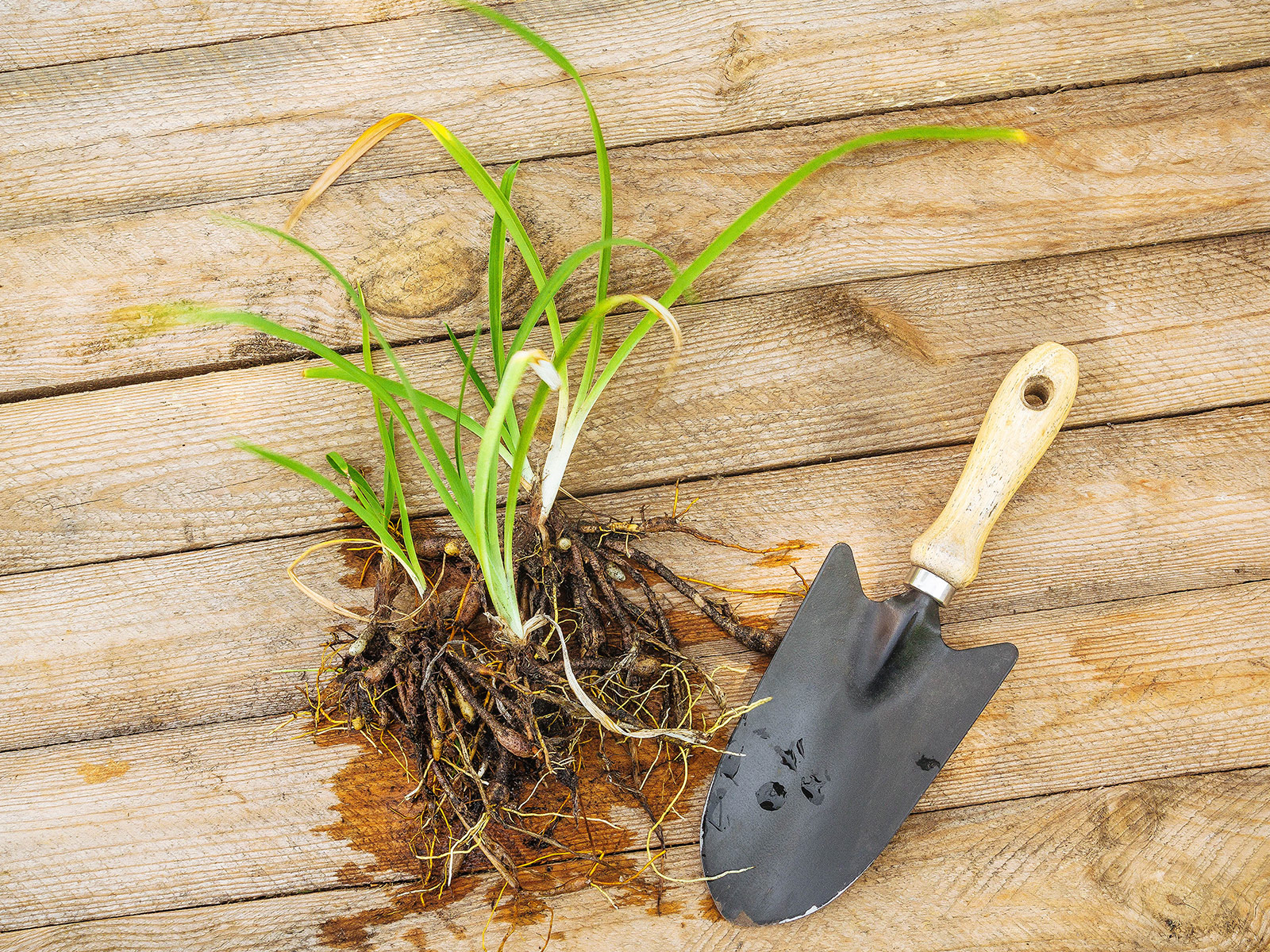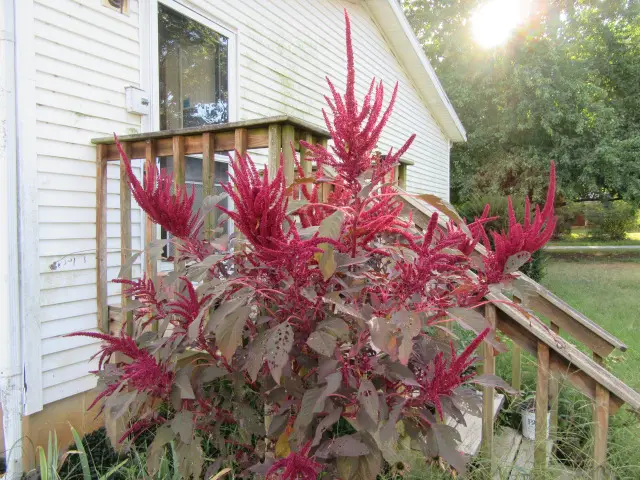[ad_1]
When you’ve had perennials inside the bottom for some time, likelihood is, factors might be wanting only a bit crowded by now. Pruning solely goes thus far, and after just a few years, your vegetation could have to be divided to deal with their dimension and rejuvenate progress.
A bonus of this train is: you furthermore get some free vegetation out of it!
Not all perennials have to be or have to be divided, nonetheless. Just some of them really resent being disturbed as shortly as they’re inside the bottom (together with toddler’s breath, false indigo, lupine, butterfly weed, clematis, and Russian sage), whereas utterly completely different perennials with woody stems or extended taproots are troublesome to divide and replant with success (equal to lavender, rosemary, thyme, sage, periwinkle, and burning bush).
Indicators {{{that a}}} plant must be divided
Perennials often have to be divided each three to 5 years, however this schedule isn’t set in stone. Some vegetation could do bigger being break up yearly, whereas others can wait a pair extra years. Your yard will allow you to notice when it’s time by supplying you with just a few seen cues:
- Fewer or smaller blooms
- Rather a lot a lot much less vigorous progress
- Nice dense progress earlier the plant’s supposed spot
- Sparse foliage on the underside, giving your plant a leggy look
- Lifeless or naked spots inside the middle of the plant
And naturally, you might need to interrupt up your plant in the event you’ve gotten a spot to fill contained in the yard or when your neighbor desires one!

When to divide
A superb rule of thumb for figuring out when to divide perennials is to divide them reverse of when the vegetation bloom.
Which means it’s advisable to:
- Divide spring-blooming perennials in fall (after they’ve completed flowering)
- Divide fall-blooming perennials in spring (earlier than they actually get going)
Associated: Observe this fall yard tips to prep your yard for spring
The timing is essential since you need all of the plant’s vitality to go within the course of rising extra roots and leaves. Look forward to a string of cool, overcast days to cut once more warmth stress in your plant in the event you occur to divide and replant it.
Fall divisions should occur 4 to 6 weeks earlier than the primary exhausting frost, so your vegetation have time to develop new roots earlier than the underside freezes.
Be taught extra:How one can uncover your first and shutting frost dates to plan forward for planting
Spring divisions have to be carried out appropriate after new progress emerges. At this stage, the inspiration system’s saved vitality will assist the plant get greater from being lower aside and moved.
Disclosure: When you retailer from my article or make a purchase order order order by way of one in all my hyperlinks, I’ll obtain commissions on various of the merchandise I want to advocate.
How one can divide
Ensure your vegetation are appropriately watered a day or two earlier than you propose to separate them. Ahead of you set a shovel inside the bottom, have a sport plan in place for the place the mannequin new divisions will go—you don’t need them to dry out whilst you go in search of his or her new residence.
To cut once more moisture loss and assist your plant get greater sooner, trim as soon as extra the foliage by a minimal of half. I often solely go away about 6 inches of progress above floor—don’t concern about this drastic haircut, your vegetation will develop all of it as soon as extra!
Put collectively the planting area (amending the soil as wanted) and, in case you have acquired numerous perennials to separate, keep a bucket of water shut by to maintain up the roots moist whilst you’re employed.
When you might’t replant the divisions inside the bottom instantly, put them in containers till you could have gotten a everlasting place contained in the yard for them.
After getting your units and area prepared, it’s time to dig! Use a shovel or spade and dig 4 to six inches away from the underside of the guardian plant. Gently elevate it out of the underside, shake off any free soil, and take away any broken or discolored roots and leaves (together with any hitchhiking weeds).
The best way during which you divide a plant will rely on what its root system seems to be like:
Spreading root methods
Crops which have spreading root methods with matted roots (like bee balm, coneflowers, and asters) can merely be pulled aside by hand or lower aside with a knife. If the plant could very effectively be very giant, you most likely can separate the roots by inserting two digging forks as soon as extra to as soon as extra and prying the roots aside.
Divide the plant into particular particular person clumps, every with three to 5 healthful shoots. (Discard any clump that has a spot in it.)
Replant every clump with the underside of the stems appropriate at soil diploma.
Clumping root methods
Daylilies, hostas, and astilbes are frequent examples of vegetation which have clumping root methods. These perennials will possible be divided via utilizing a pointy knife to slice appropriate by way of the clump (from the crown down).
Every clump should have a minimal of three leafing shoots (although in the event you want extra—albeit smaller—vegetation, you most likely can usually replant a clump with as little as one shoot on it).
Plant every clump on the identical depth the distinctive plant was rising.
Rhizomes
Rhizomes are underground stem methods that develop horizontally barely beneath or on the soil floor. Canna lilies, calla lilies, and bearded irises are frequent examples of vegetation with rhizomes.
To divide them, dig up the vegetation and break aside the rhizomes by hand. Every division should have just a few inches of rhizome and a few leaves. Cut back the leaves by about half to encourage the newly separated rhizome to offer consideration to establishing its roots earlier than worrying about its foliage.
Replant every rhizome with the perfect half barely beneath and even with the soil diploma.
Bulbs
Early-blooming spring bulbs like daffodils, tulips, and hyacinths multiply over time, with smaller bulbs rising as offshoots from the principle (guardian) bulb. Look forward to the leaves to die as soon as extra utterly earlier than you divide them—this ensures the bulbs have saved satisfactory dietary nutritional vitamins to outlive till the next spring.
I usually divide my bulbs in summer time season when the leaves are brown however haven’t totally decomposed; which implies, I do know the place to dig for every plant. (Nonetheless it is usually potential to do that in fall whereas the bulbs are nonetheless dormant.)
Use a hand fork or trowel to dig beneath the plant and elevate the entire clump of bulbs out of the underside. Alongside alongside together with your arms, pull the smaller toddler bulbs aside from the guardian bulb. Discard any bulb that’s gentle, diseased, or broken, and keep solely individuals who really actually really feel firm and look healthful to replant.
[ad_2]
Present hyperlink
- 3 Indicators Your Onions Are Able to Harvest – Backyard Betty - 1 July 2025
- Planting Methods & Seasonal Upkeep [6.14.25] - 19 June 2025
- June However Nonetheless Not Actually Summer time - 19 June 2025


